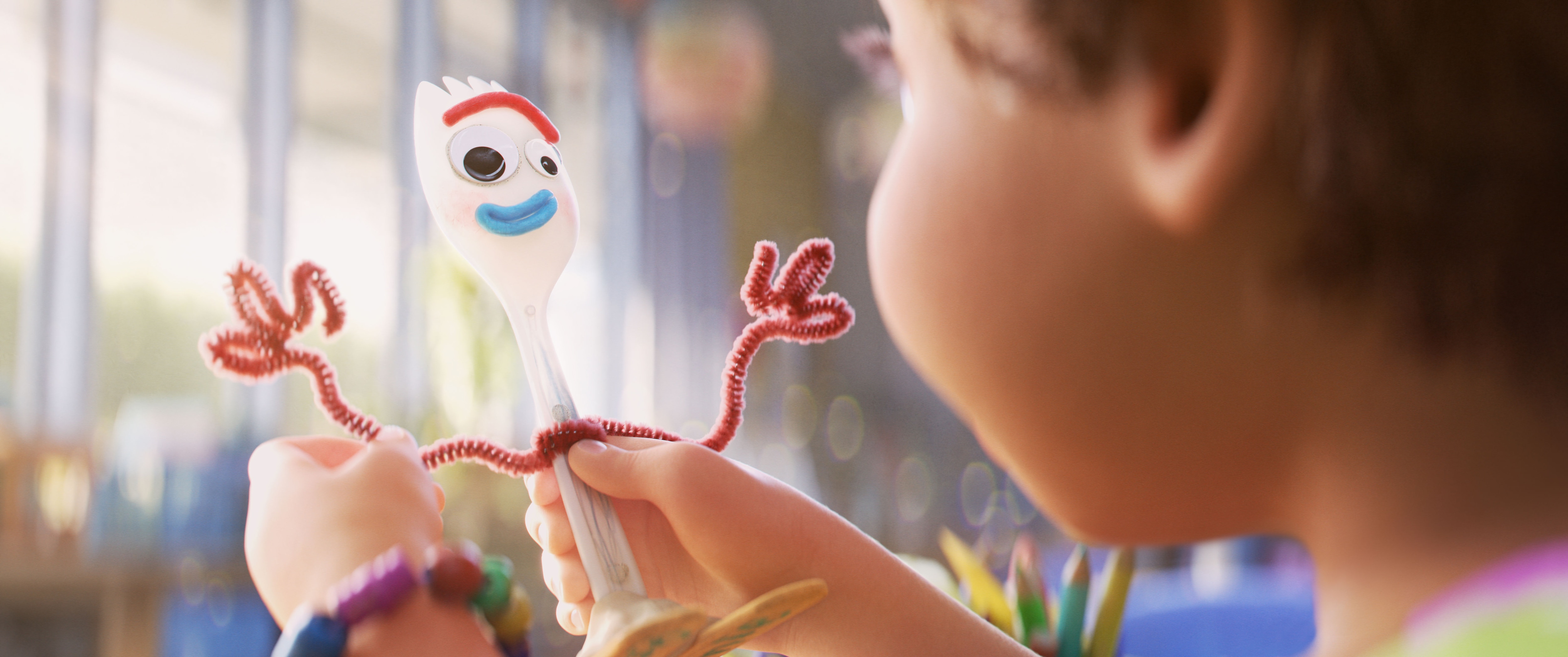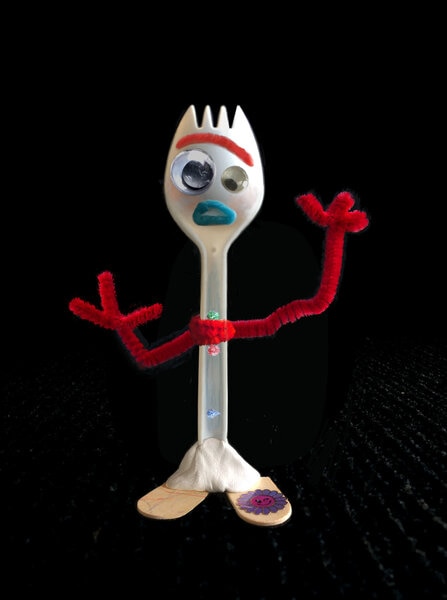Create a free profile to get unlimited access to exclusive videos, sweepstakes, and more!
Inside Toy Story 4 and its great forkin' existential crisis

What does it take for an inanimate object to gain sentience? In Toy Story 4, the answer is seemingly simple: Pipe cleaners, glitter glue, googly eyes, and a purpose.
Since the first Toy Story captured audiences' hearts in 1995, toys in that digital world have always followed a few simple rules. The rules, while never explained, are obvious; a human can never see a toy move, talk, or show any kind of general self-awareness. To reveal the toy world would be disastrous, and every toy in the Toy Story world seems to be manufactured with this innate understanding, even the villains who might prefer a bit more chaos than Andy's toys and their friends.
But at the end of Toy Story 3, Andy delivered his toys to Bonnie, a little girl with an imagination that goes well beyond the molded, painted plastic of everyday toys. That imagination and her creativity result in her creating Forky, an art project that soon becomes the star of Bonnie's world. Because Forky, an off-kilter spork voiced by Tony Hale (Arrested Development, Veep), is of such importance to his new kid, Woody (Tom Hanks) takes it upon himself to be Forky's keeper. And if Woody gains some points along the way by taking care of Bonnie's favorite toy? All the better for him.
If only Woody knew what a big job he was taking on and the changes he'd experience along the way. Because keeping track of a wobbling, talking spork that believes itself to be trash? Not so easy.
The fourth film from Pixar's beloved Toy Story franchise inadvertently raises some questions never considered in previous films. Namely, if Bonnie can create sentient life from an amalgamation of literal trash and art supplies simply by writing her name on a shard of a popsicle stick and loving what she's created, what's the meaning of being alive, and who determines what gets to live, anyway?
When Toy Story 4 director Josh Cooley spoke with SYFY WIRE and other members of the press at Pixar Studios in Emeryville, California, he considered the question of what makes a toy sentient.
"Even in the first Toy Story, there's a line where they say, 'Oh the lawn gnome across the street hasn't seen him.' It's like we don't see that, but there are things that are alive that we just never answer the question for," Cooley said. He went on to compare toy sentience to the infamous midichlorian explanation in Star Wars — fun to think about, but unnecessary. It is because it is.
"It's the truth of it," producer Mark Nielson continued. "Our kids do make craft projects and they play with them, so that would be alive in this world."
Producer Jonas Rivera added that Bonnie writing her name on Forky is what sealed the deal, at least within the story, comparing the stroke of Bonnie's marker to Frosty the Snowman's hat.
Except Frosty knew which way was up from the moment he came to life. Forky, on the other hand, is a mess, at least in the beginning.
"Forky is like a newborn," Nielsen said. "He doesn't know anything about life — he doesn't even understand why he's alive or what a toy even is. He makes Woody vocalize what it means to be a toy."
In Forky's crisis, Woody finds a new outlook on life and on what his purpose is. That is, after all, what the Toy Story franchise has always explored: A person's, or, rather, a toy's place in the world. Forky doesn't believe himself to be a toy — a point made obvious by his harried screeches of "trash" at the beginning of his life, as well as his constant attempts to throw himself into Bonnie's trashcan. The other toys look on with bemusement and some confusion; why would Forky prefer to be trash than a toy, especially a child's favorite toy?
But maybe being a kid's toy isn't all there is to being a toy.
"That's what Toy Story is built upon, that everything has a purpose," Cooley explained. "A toy's purpose is to be there for their child. A cup's purpose is to hold water. So being that he's a spork, it's like, 'Soup, salad, chili, single use.' So now he has a whole new purpose." Cooley continued: "And it's not only Forky, but now Woody has a new purpose, as well, and so does Bo, and everybody [in Toy Story 4] kind of reflects that theme of change."
In the end, it's not what comes to life in the Toy Story world, but what those things that are alive do with their lives. There's a big, wide world outside of Andy's room; explore that world when Toy Story 4 premieres in theaters on June 21.
















